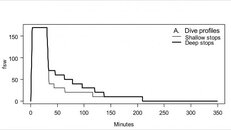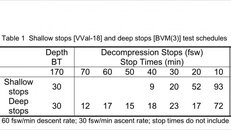Rich Keller
Contributor
I just wonder... if, as someone mentioned here earlier, the goal was to demonstrate a general principle, rather than evaluate specific profiles/models actually used in practice, why not resume experiments on goats? One could have performed many more experiments, and on a wider range of parameters this way...
They were testing what the actual limits are and in order to do that they had to take this to the extreme on air. This is done to provide a baseline from which the algorithms for other models are derived. The people who think their model is better even though it was derived from an old baseline that this study has proved to be wrong are placing themselves at risk. The experiments on sheep were only done because their circulators system reacts the same as ours so the short and long term effects of DCS on the body could be studied without placing divers at risk.






